Nationalism in India
Nationalism in India is the chapter of social science related to History covers the whole syllabus of class 10 gives the basic idea of nationalism and it’s role in Independence
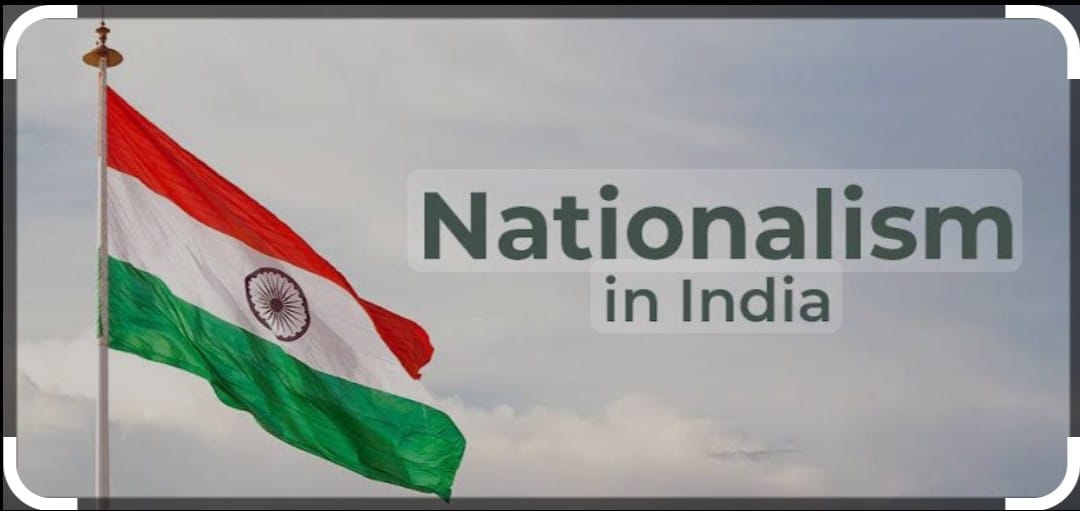
During the time of the first world war (1914 – 1918), India had gone through major economic and political changes. Since, England was one of the major countries fighting the war. India’s resources and men were also being used to fight.
Effects of the first world war on India:
a.) Increase in the defense expenditure which was financed by war loans.
b.)Taxes were increased
c.) Custom duties were increased.
d.) Introduction of Income tax
e.) Prices of goods doubled between 1913 and 1918
f). Villages were called to supply for soldiers and Forced recruitment led to anger.
g). Crops failed in many parts of India leading to acute shortage of food.
h). Influenza epidemic
i). According to 1921 census, 12-13 million people lost their lives to famine and war.
MAHATMA GANDHI’S RETURN TO INDIA and THE IDEA OF SATYAGRAHA:
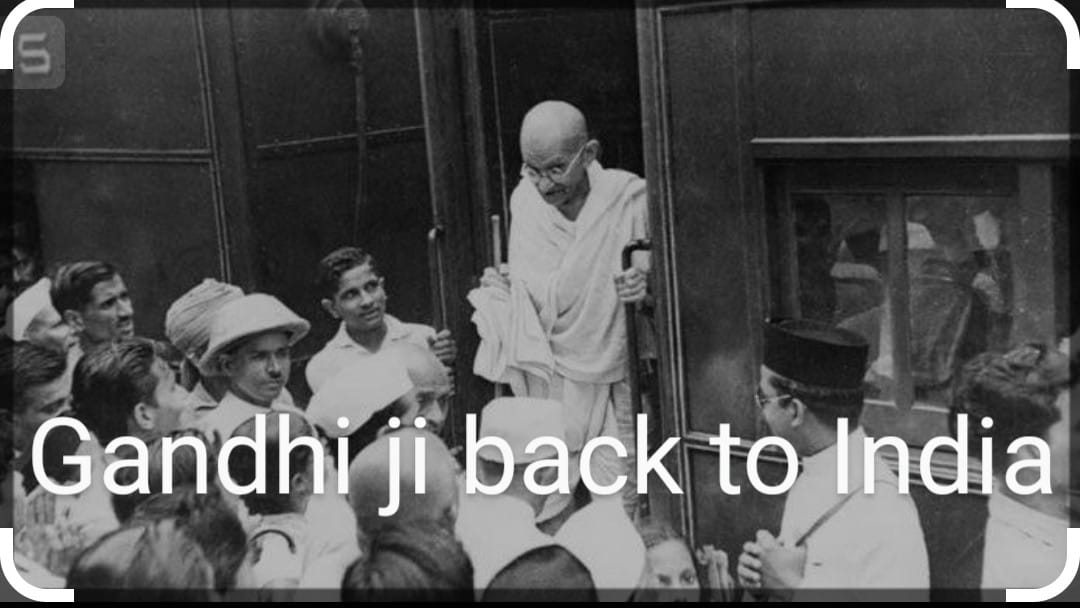
Mohan das Karamchand Gandhi came back to India in July 1915.
He had successfully fought against the racial discrimination in South Africa called Apartheid by the Idea of Satyagraha.
The idea of Satyagraha focused on the power of truth and the need to find the truth. He claimed that if the cause was true, and the fight was against injustice, there was no need for the use of violence to achieve the goal.
He believed that the truth can be appealed to the oppressor not by forcing it through violence, rather questioning their conscious.
After arriving in India, he conducted three major struggles which earned him the title of Mahatma:
a. Champaran, Bihar,1917: for the indigo plantation workers.
b. Kheda, Gujarat,1917: for the peasants affected by the crop failure and epidemic, peasants were unable to pay the revenue and demands were made for the revenue collection to be relaxed.
c. Ahmedabad, Gujarat,1918: for the cotton mill workers.
ROWLATT ACT
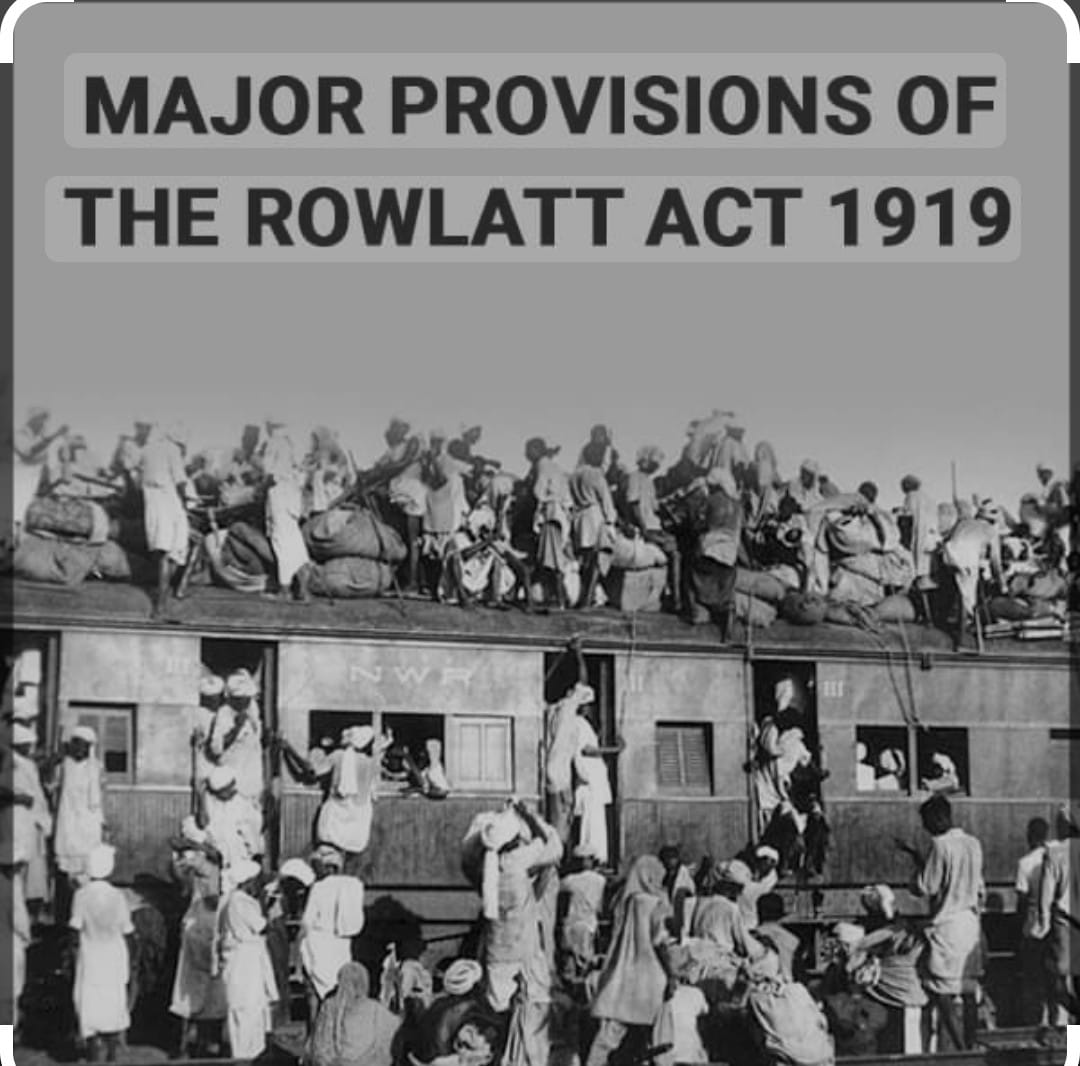
Rowlatt act was a law passed under Justice Rowlatt that gave power to the Police to arrest any person of interest who might be involved in revolutionary activities. They could be detained for two years without any warrant.
Dr. Saferdien Kilchew and T.P. Sabur were arrested under this act.
Gandhiji order Gandhiji order a nationwide protest against the Rowlatt act starting from April 6, the hartals, rallies and protests began to grow all over the country.
Workers went on strike, Railways and Shops were shut down.
The British government decided to act on it by Barring Mahatma Gandhi from entering into Delhi.
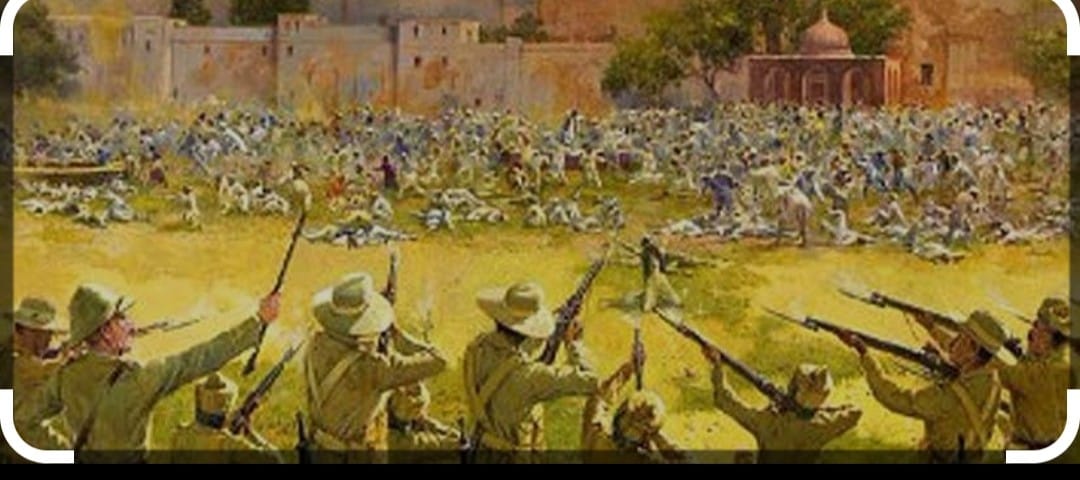
On April 10, Police fired upon peaceful protestors in Amritsar. This invoked the martial law in the country. Then Governor of Punjab, Michael O Dwyer ordered General Reginald Dyer to take command.
On April 13, 1919, Large crowds had gathered at the Jallianwala Bagh to celebrate Baishaki. Many came from out of the cities and were unaware of the Martial Law being imposed in Amritsar. General Dyer entered into the Jalliawala Bagh, blocked the exit and opened fire on the Peaceful. protestors killing over 1000 Men, Women and Children. His objective was later declared to put fear in the minds of the Satyagrahis.
After the Massacre, There were People attacking the government agencies, Strikes and Clashes with Police became common. Government responded in brutal fashion as it crushed the protests. Satyagrahis were forced to rub their noses on the ground, do salute to the government offices, crawl on the ground, people were flogged and villages were bombed. As the violence began to spread across the country. Gandhiji called off the movement.
KHILAFAT MOVEMENT:
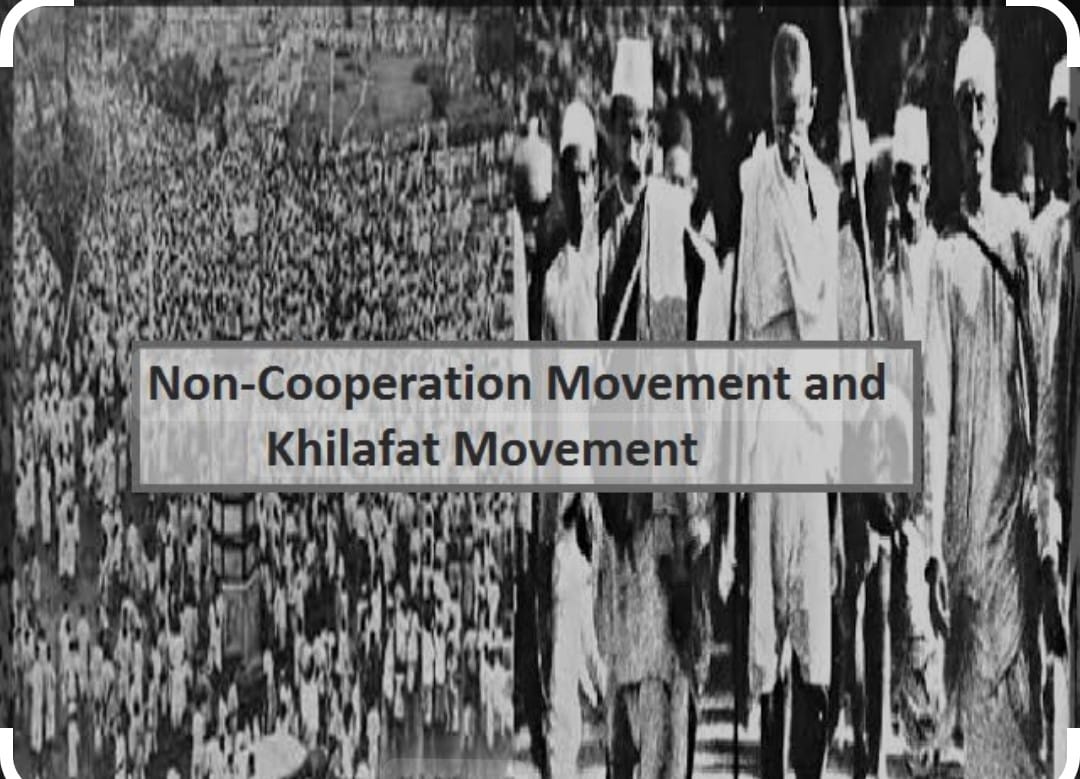
Mohommed Ali and Shaukat Ali came to Gandhi ji asking for his help to propagate the ideals of the Khalifa. The King of the Ottoman Empire who were defeated in the first world war and had their powers being drained down deeply.
Gandhi ji saw this as an opportunity to unite Hindu and Muslim to fight for the United Peace of India. A khilafat committee was formed in Bombay in March 1919.
By September 1920, Gandhiji convinced every major leader to start a Nationwide protest against the Britishers along with the Khilafat Movement and in the Calcutta session of INC in Sept 1920, Non-Co-Operation Movement was Launched.
In his book, Hind Swaraj (1909), Gandhiji Wrote that British were able to survive because of the co-operation of the oppressed. If we were to stop cooperating, the British Raj would Collapse.
THE NON-CO-OPERATION MOVEMENT(NCM):
Features of NCM:
a.) Government titles were abolished.
b.) Boycott of civil services, police, foreign goods, legislative councils, schools, etc.
c). Gandhi, Shaukat Ali propagated the NCM and Khilafat Movement around India.
d). Congress was at first reluctant to boycott the elections of November 1920, however, in the Nagpur Session of December 1920, NCM was completely adopted.
e). All of protests called for Swaraj.
NCM in Towns:
a.) Movement started with Middle Class.
b. )Thousands of Students left Government controlled Schools.
c.) Teachers, Headmasters resigned from their jobs.
d.) Lawyers gave up their Legal Practices.
e.) Council Elections were boycotted except for in Madras, where Justice Party made up of Non Brahmins entered the elections to gain some power over Brahmins.
f.)Foreign Goods were Boycotted and Burned.
g.) Liquor shops Picketed.
h.) Merchants refused to do Foreign Trade and buy Foreign goods.
i.) Import fell from 102 Crore to 57 Crore in just one year.
j.) Production of Indian textile mills and Indian Handloom went up.
However, NCM in towns was brought down significantly due to the following reasons:
a. Khadi was very expensive and not everyone could afford and hence, they turned back to foreign goods.
b. There were not many Indian institutions and hence, Parents began to enroll their children back to schools.
c. Teachers and Lawyers also went back to their jobs.
NCM at Countryside:
a.) Struggles were led by peasants and tribals across the countryside against the British.
b.) In Awadh, Baba Ramchandra Led the revolt against the talukdars and landlords who asked for very high rent from the peasants.
c.) Peasants had to work as labour without any payment at Landlord’s land. This was called Beggar.
d.) Peasants demanded Reduction in revenue, abolition of beggar and social boycott of the landlords.
e.) In July 1920, Jawahar Lal Nehru began going from village to village across Awadh and started Oudh Kisan Sabha led by J.L. Nehru and Baba Ramchandra.
f). 300 branches were opened across different villages.
g). However, large number of houses of landlords were destroyed, bazaars were looted and grain was stolen.
h). Land was to be distributed among the poor and no taxes were supposed to be paid as asked by the local leaders in the name of Gandhiji.
Role of Tribals in NCM:
a). Tribals interpreted the message of Gandhiji in their own way.
b). In the Gudem Hills of Andhra Pradesh conducted Guerrilla Warfare against the colonial government.
c). Colonial forests had banned the entry of tribals to graze their cattle, collect firewood and fruit.
d). This enraged the people as it not only affected their livelihood but denied their traditional right.
e). They were forced to do begar and hence, they revolted under the leadership of Alluri Sitaram Raju.
f). Alluri Sitaram Raju claimed he had special powers, he could heal people, read their astrological horoscopes correctly.
g). He was inspired by Gandhiji and Persuaded the tribals to follow Gandhi ji when NCM started.
h). Tribals began to wear Khadi and gave up drinking.
i). Gudem tribes attacked police stations, attempted to kill British officials and kept doing guerrilla warfare for Swaraj.
j). Raju was captured in 1924 and was Executed.
Swaraj in Plantation Workers:
a). For Plantation workers in Assam, Swaraj meant the freedom to move freely and move out of their confined spaces.
b). Under the Inland Emigration act, 1859. Tea Plantation workers were not allowed to leave the field without permission.
c). At the start of NCM, they left the field and ran back for their homes. However, hardly any reached back as they were caught by the police or Landlord’s men.
However, the Movement became very strong but the Violence caused at the small town of Chauri Chaura of Gorakhpur District, UP where rebels burnt 22 Police men alive in the Police Station in Feb 1922 led Gandhiji to withdraw the Non Co-operation Movement.
A large number of leaders were tired of the mass struggles and decided to take part in the council elections made under Government of India Act 1919,
Motilal Nehru and C.R. Das decided to form their own party in 1924 called the swaraj party.
Jawaharlal Nehru and Subhash Chandra Bose advocated for mass radical struggles for freedom.
However, with the upcoming economic depression of 1920s, The world fell into Economic tensions.
The Prices of the crops feel dearly by 1925 and by 1930 they collapsed completely. The demands for the agricultural goods and exports declined. Countryside found it extremely difficult to survive.
Meanwhile there was struggle for the demand of the India’s own Constitution by the INC. hence,
the Tory government in Britain formulated a statutory committee under the leadership of John Simon to be sent to India to formulate India’s Constitution. However, not even a single Indian was in the committee and hence, It led to mass protests across India with the slogans of “Simon Go Back”
During One Protest in Lahore, In Oct 1928 A Lathi Charge was issued by Col. Saunders which lead to the death of Lala Lajpat Rai.
The Viceroy of that time, Lord Irwin put out a vague idea of India having a dominion status and the Round Table Conference. However, this met with major revolts from the leaders.
In Dec 1929, Under the Presidency of J.L. Nehru at Lahore Session, Congress formalized the demand of “Purna Swaraj” or “Full Independence” and on 26 Jan 1930, India celebrated their first Independence Day.
THE SALT MARCH
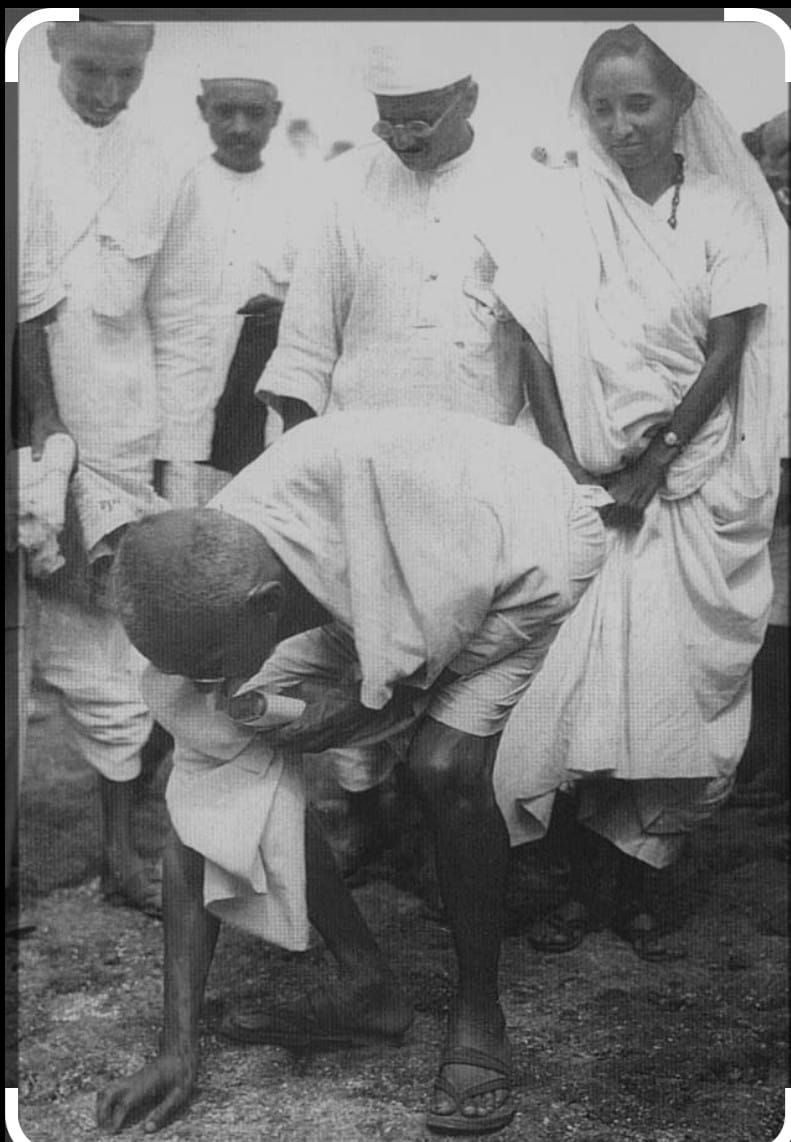
On 31 Jan,1930 Gandhiji wrote to Lord Irwin 11 demands of the people of the Nation which unified the whole country. One of these demands was to abolish the salt tax. The letter was sent as an ultimatum
to the British Government, that if the demands were not met by 11 March, Congress would launch the Civil Disobedience Movement. However, Irwin did not want to Negotiate.
Hence, On 12 March 1930, Gandhiji along with 76 of his followers left the Sabarmati Ashram to the Coastal town of Dandi (240 Miles). He reached Dandi on 6 April 1930 with thousands of followers where he evaporated the sea water and broke the Salt Law. This marked the beginning of the CIVIL DISOBEDIENCE MOVEMENT.
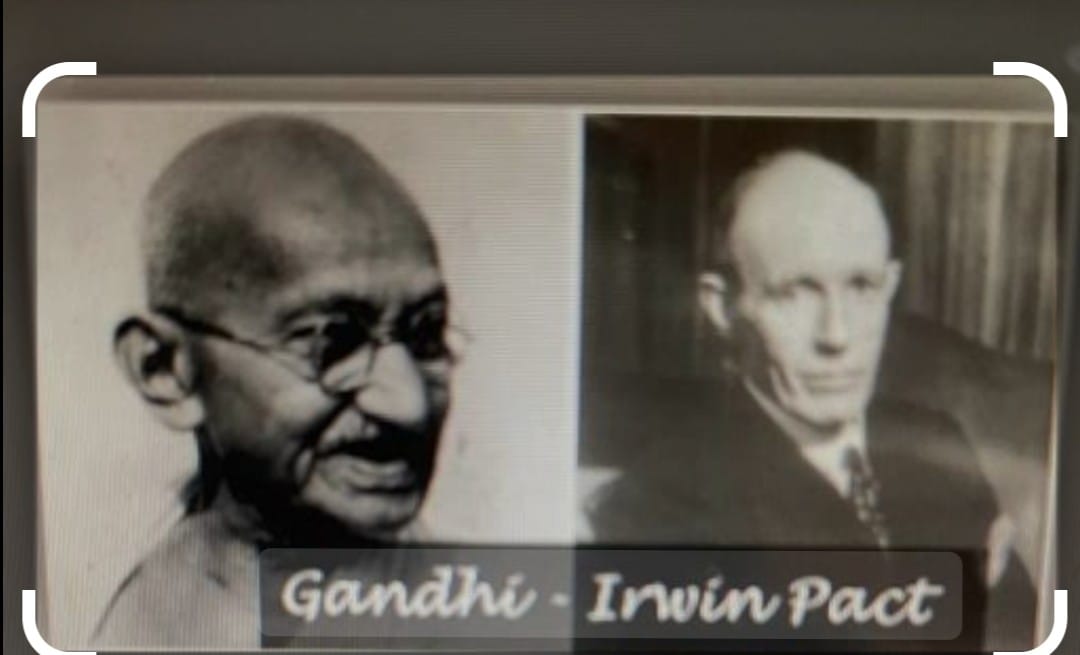
THE CIVIL DISOBEDIENCE MOVEMENT (CDM)
People were not only refused to co-operate with the British but also began to break the colonial laws. Over 1 Lakh People put into jails.
Features of CDM:
a). Thousands broke the Salt Law in front of Salt Manufacturing Factories.
b). foreign goods was boycotted.
c). Liquor shop were picketed.
d). Peasants refused to pay revenue to landlords and chaukidari tax.
e). Village Officials resigned.
f). Tribals began to break Forest Law and began going into forests.
g). Large assaults took place when Congress Leaders began getting arrested.
h). When Khan Abdul Gaffar Khan (Frontier Gandhi) was arrested, angry crowds came down to streets in Peshawar to Riot.
i). Industrial workers in Sholapur attacked Police Posts, Government Offices, Lawcourts, Railway Stations.
j). Peaceful Satyagrahis including Women and Children were beaten by the Police.
GANDHI-IRWIN PACT, 1931
A treaty was signed between Mahatma Gandhi and Lord Irwin stating the following terms:
a). Gandhiji was to take back the CDM and attend the Round Table Conference at London.
b). All One Lakh Revolutionaries would be freed from the jail.
Gandhiji consented to Participate in the Round Table Conference however, the rest of Congress boycotted the movement.
The Movement was brought to a hold disappointing many Indians.
The Conference led to no resolution and now the Congress was declared illegal with J.L. Nehru and Gaffar Khan in Jail again, Gandhiji Demanded the Re-Launch of CDM. The movement continued till 1934, however, it faded out.
ROLE OF DIFFERENT GROUPS DURING CDM:
a). Countryside:
I). The Jats of UP, Patidars of Gujarat were active members as they were the primary producers of the country.
II). The crop had failed and the low prices due to Economic Depression gave them a reason to fight in the CDM.
III). They could not pay revenue to the government and demanded the government to reduce the revenue which they refused and hence, Peasants joined the Revolt.
IV). For them, Swaraj was a struggle against high revenues.
V). However, they were left disappointed when the Revolt was called off and refused to participate when the CDM was launched again in 1932.
VI). Poor peasants were not just interested in lowering of revenue as they found it difficult to even pay the rent.
VII). However, they joined the revolt with Socialist and Communist groups as Congress did not help them with their ideals as Asking the Rich Peasants to lower the rent would ruin the relationships with rich peasants and Congress.
b. Business Class:
I). During the 1st world war, Merchants had become very powerful and rich.
II). They wanted protection against foreign goods and foreign exchange ratio to be developed in the country.
III). To formulate business, they formulated Indian Industrial commercial congress in 1920 and the Federation of Indian Chambers of Commerce and Industries (FICCI) in 1927.
IV). Industrialists like Purshottamdas Thakurdas and G.D. Birla gave financial support to the revolutionaries and refused to sell Foreign goods.
V). Most business class hoped for the Round Table Conference to help flourish their business. However, this did not happen. They were no longer enthusiastic.
c. Industrial Workers:
I). Industrial workers mostly did not participate in CDM except in Nagpur as congress was close to the industrialists.
II). Some Industrial workers conducted their individual revolts for low wages and poor working conditions.
III). There were strikes by Railway Workers in 1930 and dockworkers in 1932.
IV). In Chota Nagpur Mines region, 1000s of workers came up wearing Gandhi Caps and participated in the revolt.
d. Women:
I). Thousands of women accompanied Gandhiji during the Dandi March.
II). They protested along with him, Manufactured salt, picketed foreign goods and liquor shops.
III). Many came from Rich Urban Families and Rich Peasants.
However, Gandhiji was convinced that it was the duty of the woman to look after the home, be good mothers and good wives. Congress also did not let Women hold a major position in the system for a long time
LIMILTATIONS OF CDM:
a. One group of Untouchables which began to call themselves Dalits or Oppressed refused to take part in the Struggle against the British. For congress had no interest in dealing with Dalits in fear of angering “Santani” Gandhiji came forward to call them “Harijans” or “The Children of God”.
He claimed that Swaraj would not come in 100 years if Untouchability was not abolished. He organised Satyagrahas for them to enter into Temples, Access to Public Wells, tanks, Toilets Roads and Schools. He himself cleaned toilets to dignify the work of Bhangis.
Dr. B.R. Ambedkar was a Dalit himself, A pact was signed between Gandhiji and Him to ensure reserved seats in Constitutive and legislative councils in Poona Jail. This was known as Poona Pact 1932.
b. Some Muslim Political Organisations were lukewarm in the response to the Revolt. They felt alienated from the Congress. Congress Supported groups of Hindu Mahasabha and this widened the gap between Hindus and Muslims.
Major riots between these two social groups led to major divide between the communities. The Congress and Muslim League tried to form an alliance in 1927, Mohammad Ali Jinnah was willing to give up the demand of Separate Electorate if the seats were reserved for Muslims in the Constituent and Legislative Assemblies.
However, All hopes fell greatly when M.R. Jaykar of Hindu Mahasabha strongly opposed the alliance at All Parties Conference 1928.
The Sense of Collective Belonging:
The Identity of India was came to be known as Bharat Mata. The image was first created by Bankim Chandra Chattopadhya.
He wrote Vande Matram which was later included in his novel Anandmath.
It was widely sung during the Swadesh Movement of 1905. Moved by this, An Image of Bharat Mata was painted by Abanindranath Tagore.
During the Swadeshi Movement, a tricolour flag, Red, Green and Yellow, it had eight lotuses which represented 8 different provinces of India and crescent moon representing Hindu and Muslim Unity.
By 1921, Gandhiji designed a swaraj tricolors flag (Red, Green and White) with a Charkha in the Centre signifying Self-Help.
Conclusion : Nationalism in India
The growth of nationalism in India was a complex which played a crucial role in shaping the country’s struggle for independence. Indian nationalism emerged in the late 19th century as a response to British colonial rule. Prominent leaders like Mahatma Gandhi, Jawaharlal Nehru, and Subhas Chandra Bose guided the nationalist movement. The most popular movements were the Non-Cooperation Movement, Civil Disobedience Movement, and Quit India Movement which mobilized millions of Indians.
People from various social, economic, and religious backgrounds united in the cause of independence. Ideological influences of the movement from both Western liberal thought and India’s cultural heritage. Gandhi’s principles of non-violence and civil disobedience became powerful tools against British rule. The Swadeshi movement promoted Indian-made goods and economic self-reliance. Nationalist sentiments were strengthened through the rediscovery of India’s rich cultural and historical legacy. The nationalist movement ultimately led to India’s independence in 1947, though it was accompanied by the painful partition of the country.